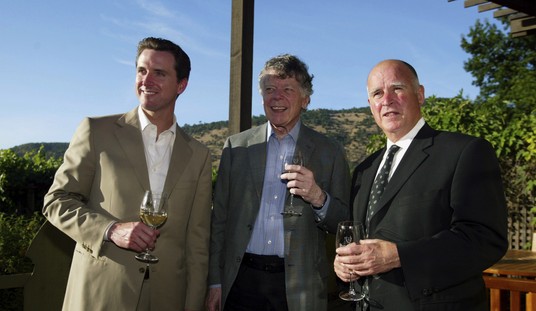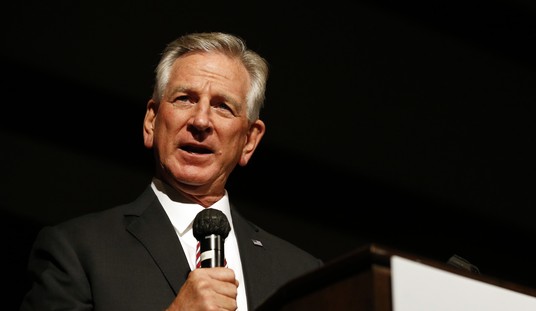Jonathan Albright writing at Medium:
In terms of historical engagement on Facebook, Right Wing News, a page representing a small (Hawkins’ note: We were top 7,000 in the world at one time) news outlet line run by (John Hawkins), basically had no peers in the news industry on Facebook until the final stretch of the 2016 election.
The two red spikes shown to the right of the graph below are the interactions of Fox News’ page. The two spikes were the result of the network’s coverage of the 2016 election results and the presidential inauguration that followed in January. This means that the kind of numbers posted by Right Wing News two years earlier, at a time the platform wasn’t as large (see the series of green peaks to the left of graph) aren’t just good—they’re unbelievable.
…The above graph also shows that for all its liberal-hating fame, Breitbart’s Facebook page has 250 million more interactions to go before it even gets close to the kind of numbers that Right Wing News page had before it was taken down.
From the time of Obama’s 2012 re-election well into the 2016 election of Donald Trump, the pages of up-and-coming, arguably more popular right-wing news media—including Breitbart, Daily Caller, and the Western Journal—did not have anywhere near the kind of engagement that Right Wing News received on Facebook.
Between 2013 and 2016, Right Wing News and its affiliate pages consistently saw more interaction on Facebook than the pages of many of the largest news media in the country: the New York Times, the Washington Post, and Fox News. Combined.
Incidentally, those quotes come from a liberal arguing that the Right Wing News Facebook page, which I ran until 2018, was so good that we must have somehow, some way, been breaking Facebook’s rules. He doesn’t seem to have any idea HOW we were breaking the Facebook rules, which of course, we weren’t. Right Wing News did that well because we came along at the right time and had a brand a lot of people on the Right had heard of, unlike most of the other bigger Facebook pages. Also, I was really good at picking stories that were of interest to conservatives, did a lot of human interest stories that helped us get outside of our normal audience, and, if I do say so myself, I am extraordinarily good at writing titles. It was a perfect storm until Facebook decided pages like ours were doing too much to help conservatives and started working overtime to curtail our reach. How big was our reach? Well, you get a good idea of it from the quote above, but it’s also worth noting that we reached more Americans in a single week than the super scary Russian campaign that has been freaking Democrats out did in two and a half years. According to the New York Times, between January 2015 and August 2017, the Russians reached 126 million Americans on Facebook. This is what we did in a single week in July,
Why yes, a lot of people do see the Right Wing News Facebook page every week. https://t.co/dJ8Rka5nE5 pic.twitter.com/BYLGPARFMV
— John Hawkins (@johnhawkinsrwn) July 1, 2015
Facebook took the Right Wing News page down this year, without ever giving a single example of wrongdoing, one week after I put together a $611,000 GoFundMe for Judge Kavanaugh’s family. Certainly, that couldn’t be retaliation against a successful conservative page right before the election, could it? Draw your own conclusions (cough, cough, yes, cough, cough), but it was the success of that GoFundMe that convinced me to write an article, as you will see on #1.
1. You don’t get to choose what goes viral
After the success of the Kavanaugh GoFundMe, there were lots of people with sad stories writing me because they believed I had some kind of magic that could bring in that same kind of money for them. Alas, I do not. One of the things I learned from doing the Right Wing News Facebook page is that to a large extent, you are at the mercy of your audience. You can shape, suggest, and guide what they may be interested in at the edges, but you don’t get to pick what they like, what they respond to, or what they will go nuts over. Sometimes you can take a good guess at it, but other times, it can leave you scratching your head.
For example, this was the fifth-biggest story of all time on Right Wing News. It did 1,549,890 page views all by its lonesome and it’s called, “She Was Just Putting Her Feet on the Dashboard — And It Was One of the Biggest Mistakes of Her Life.” Since most of us have put our feet up on the dashboard at some point in our lives, you can see how it could conceivably be relatable. But 1.5 million page views worth of relatable? Was it one of our most interesting articles? One of our best-written articles? The one I would have thought would go viral? Not even top 250 on any count, but there it is. This is important to keep in mind because you don’t choose what goes viral; your audience chooses what goes viral. You need to think of it in those terms if you want it to take off.
2. You need an engine
You can build a better mousetrap, but contrary to how the saying goes, the world will not beat a path to your door. You can also make the best, most potentially viral content out there, but if no one sees it, it has no chance of taking off. When you have a powerful enough engine, arguably everything that’s even moderately successful is at least some level of viral. For example, numbers like these weren’t uncommon on the Right Wing News Facebook page, but would be considered insanely viral today.
There are almost 200,000 likes on this image I put together since midnight last night. https://t.co/rCVxjIisfK pic.twitter.com/7iVtbxpmjI
— John Hawkins (@johnhawkinsrwn) December 4, 2014
On the other hand, here’s a little bit more of what was possible back then:
This image pulled a million likes in 24 hours in May & it’s still active. 2.262 million likes https://t.co/XalQC8y31W pic.twitter.com/Zxdi7SMFhh
— John Hawkins (@johnhawkinsrwn) October 19, 2014
If you don’t have an engine, then you still need someone with an engine to get you there. For example, there are people who have built fairly successful websites around regularly getting Drudge links. Is it possible that your viral content can just take off on its own with an individual or organization that brings major traffic pushing it? Yes, but that does not happen very often. Eminem, Fox News, and some Instagram model with 3 million followers have about a thousand times better chance of something they do going viral than a regular person who does exactly the same content.
3. Uniqueness is important
How can you go nuclear if everybody is saying what you’re saying? You’ve got to be saying something new; you’ve got to have a new take; you’ve got to come up with that thing everyone is thinking but doesn’t quite realize themselves. That’s why Right Wing News regularly did human interest stories other conservative news services weren’t doing. We needed something intriguing and different to draw people in outside of our normal audience. In fact, I still remember someone I know telling that to her liberal friends were regularly sharing Right Wing News stories. Those relatively unique human interest stories were the ones they were sharing. Ironically, this part of the equation is why fake news and conspiracy theories have a higher than average potential to go viral. After all, if you write “It Has Finally Happened! Trump Has Thrown Hillary in Jail Over This,” or “Hard Proof That the Illuminati Were Behind Republican Election Losses,” you will have no competition and thus can clean up every potential reader for a subject. This is also one of the reasons you see articles that seem to be such horrible hot takes. If you write “Why Won’t We Admit the Truth?” “Every White Man Is a Potential Rapist,” or “When You See a MAGA Hat, Put a Bullet in It,” you will get a certain trollish group of people who read it and share it along with a large group of haters who show up to read the article. If you get lucky, you may even have articles written about how awful it is, which drives even more traffic. In today’s world, being notorious is almost as good as being famous. It’s a poisonous game, but an awful lot of people are playing it.
4. You need energy
When I trained people to pick stories at Right Wing News, the number one thing I hammered home beyond “don’t deceive your readers; always be honest,” was “have an emotional hook for your story.” When you live in a world where you’re competing for attention with the latest cute cat videos, insane conspiracy theories, and a new video from Machine Gun Kelly, people need to have some reason to choose your information. When people are making that decision, junk food beats eating your vegetables 99 percent of the time. In other words, if you make people feel something, they click; if you don’t make them feel anything, they pass and click something that does. Sadly, that means that most people pass on the substantive policy issues in order to read the outrage of the day, but if your goal is to be viral, you have to adjust to the world as it is, not as you want it to be. The more energy there is around an issue, the better chance there is for it to go viral. For example, the hottest piece I did for PJ Media this year passed a quarter of a million views. It was called the Five Big Problems with Christine Blasey Ford’s Testimony at the Kavanaugh Hearings. It was well written, had a good title, came out the same day as her testimony, and most importantly, covered a subject as hot as molten lava on the Right. If I had written it a day later, it would have been lucky to do a tenth of the traffic, but right then when the energy level around the subject was at its absolute peak, it was just what the doctor ordered to drive traffic.
5 Headlines create clicks
Here’s an ugly truth about the social media era: headlines are 90 percent of the battle because that’s all most people see before they choose to click a link. If you wrote the best article on the Internet today but have a mediocre headline, chances are no one is going to read it. On the other hand, great headlines can often draw tons of traffic to lousy articles — hence the clickbait articles that everyone gets so huffy about. “All she did was stick her hand in the water and you won’t believe what happened next!” “Baby hippos see snow for the first time and they do this…” “112-year-old man gives his secret to living a long life. Whiskey, cigarettes, and…..” Know why people do those? THEY WORK! You’re probably dying to click on those articles right now and I just made them up off the top of my head. You may say, “But, I’m not writing anything! I’m a musician!” Then what’s the chorus of your song? “I’m a politician!” Then what’s your slogan? “I’m doing a speech!” Then what’s the memorable part at the beginning and end? You need something memorable that’s going to cut through the noise, whether it’s “Mr. Gorbachev, tear down this wall,” “Where’s the beef?” or “Hey, I just met you and this is crazy, but here’s my number: so call me maybe.”
Incidentally, there are many things that are difficult to make go viral at all — most technical, nuanced explainers and serious policy issues, for example. Also, even if you do everything right, you will miss far more often than you hit when you’re trying to make things go viral. That’s the nature of the game and you should never forget it.









Join the conversation as a VIP Member